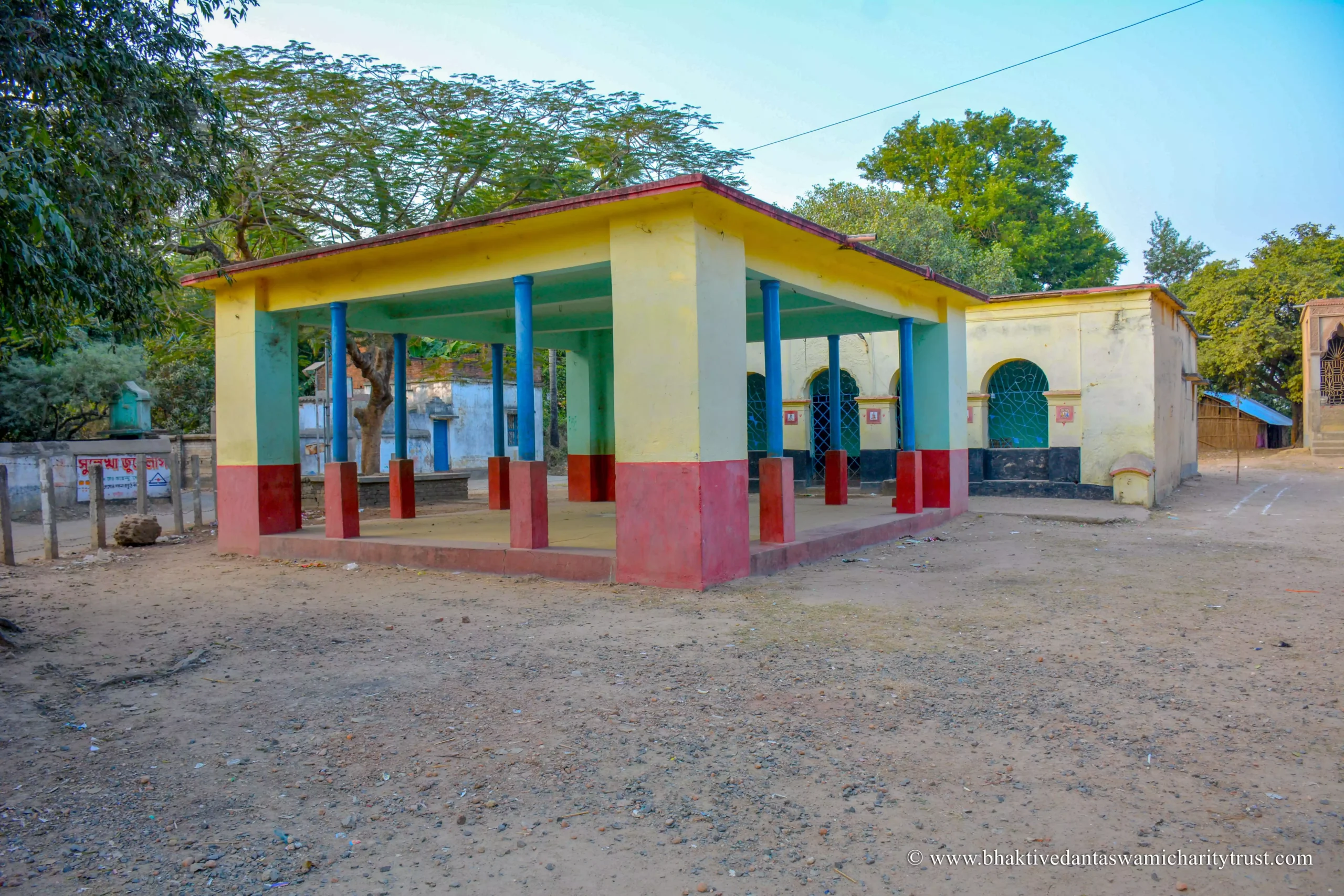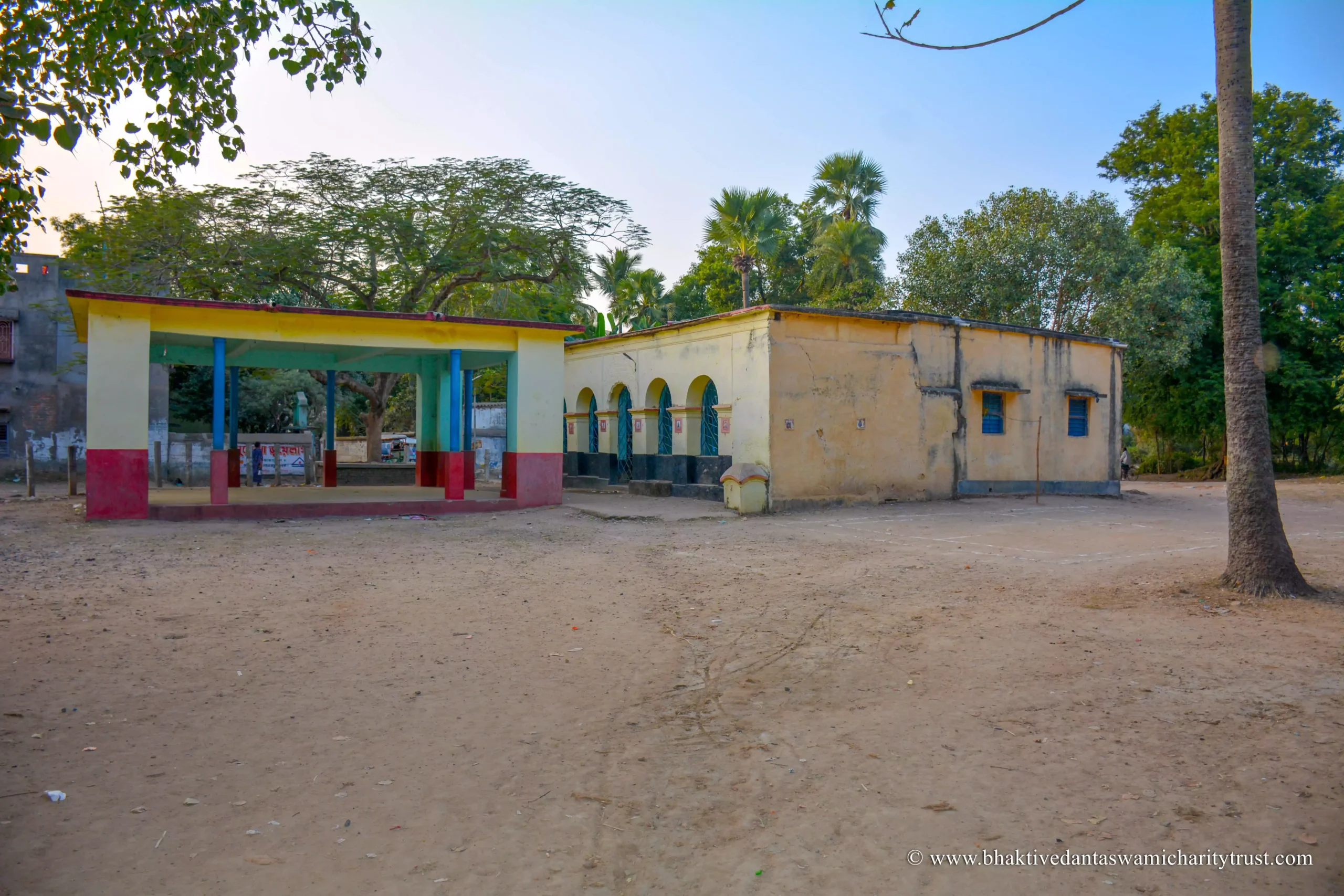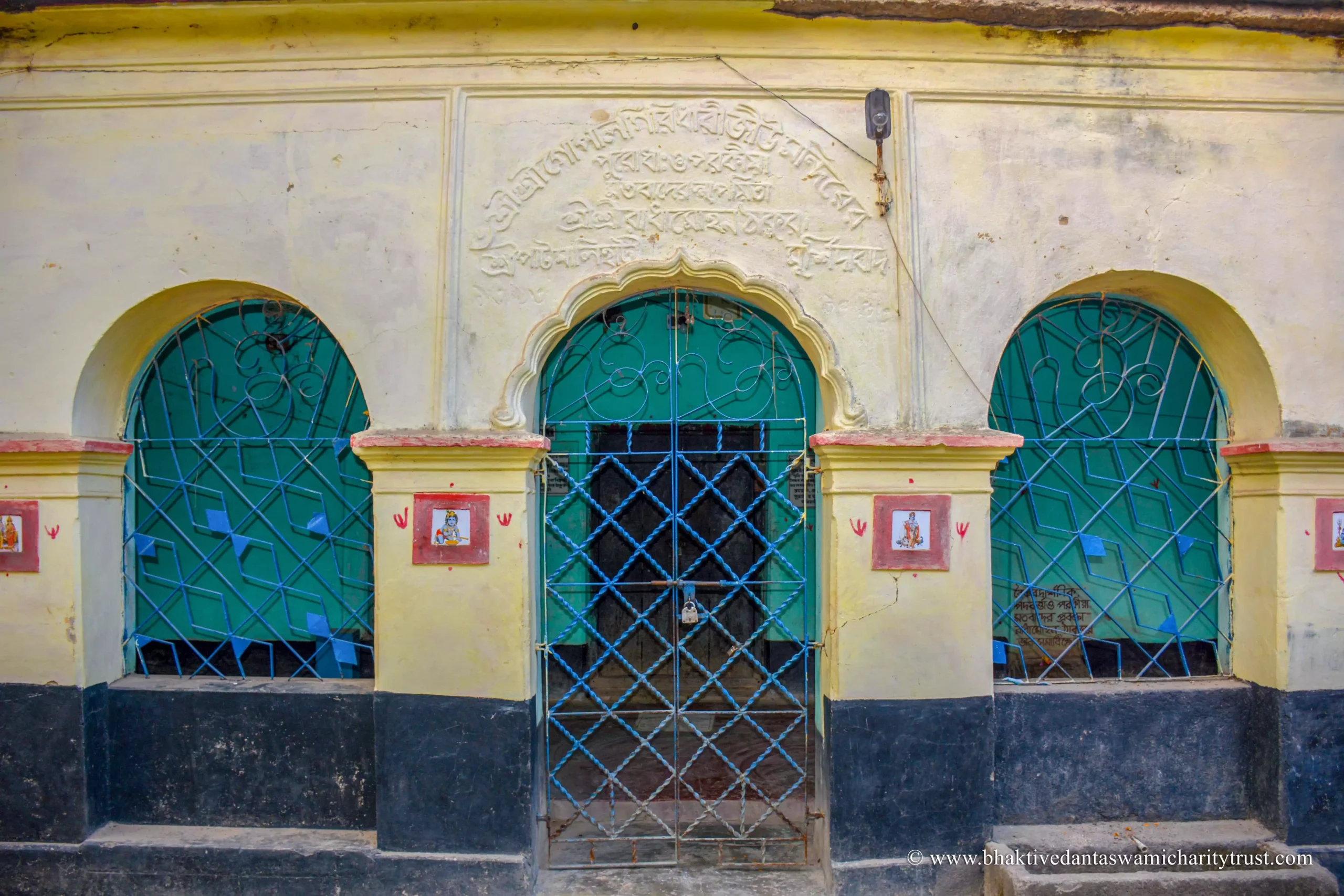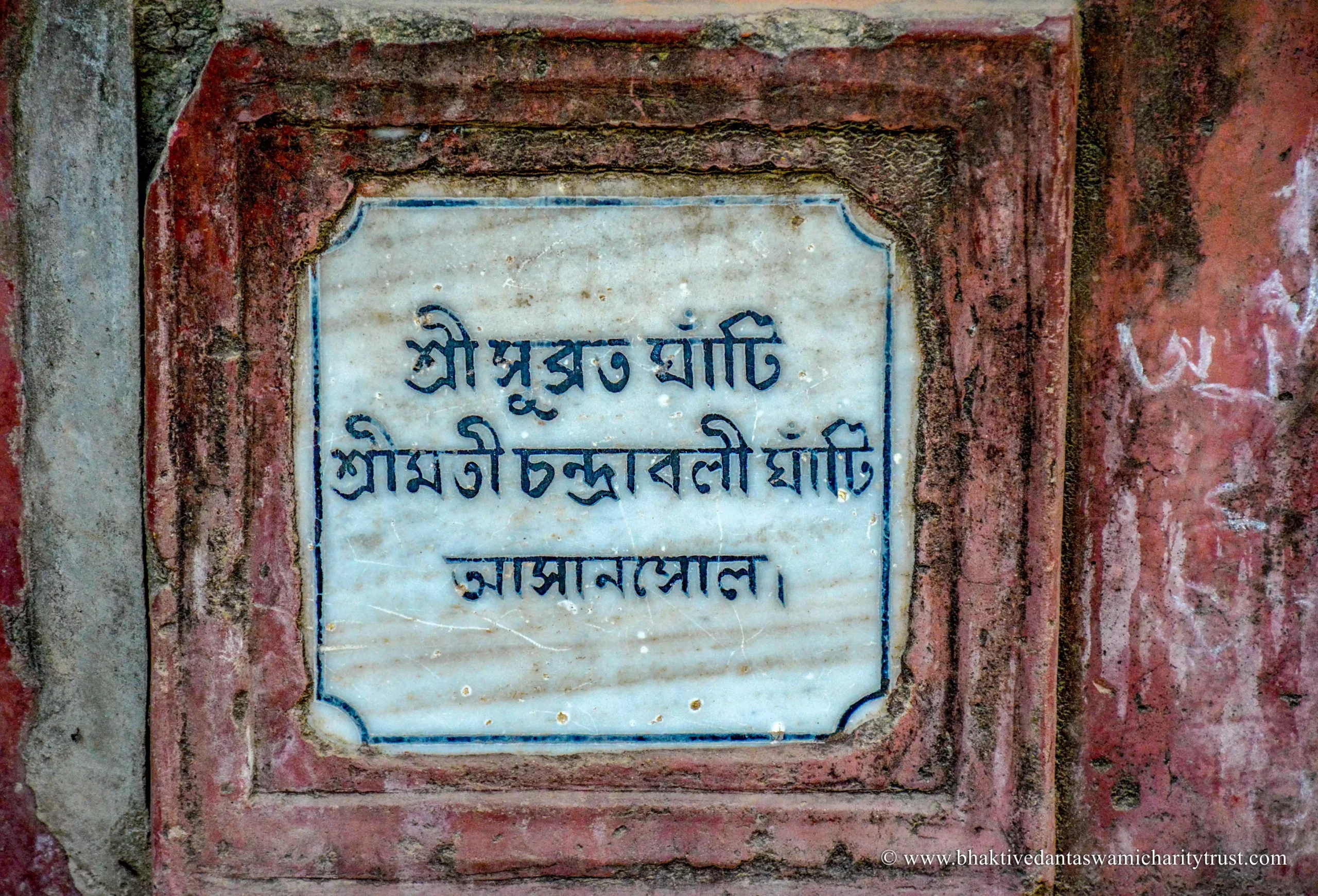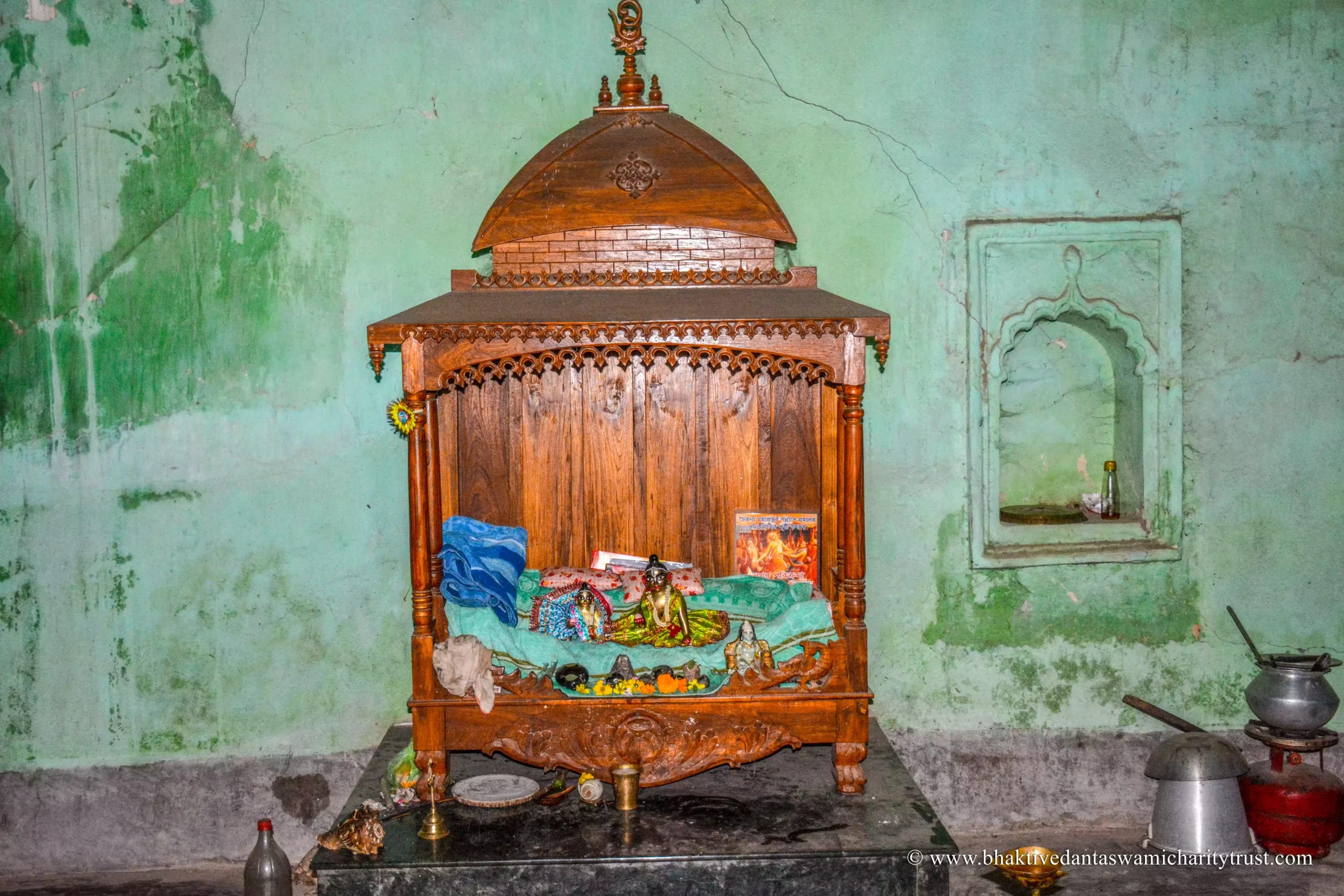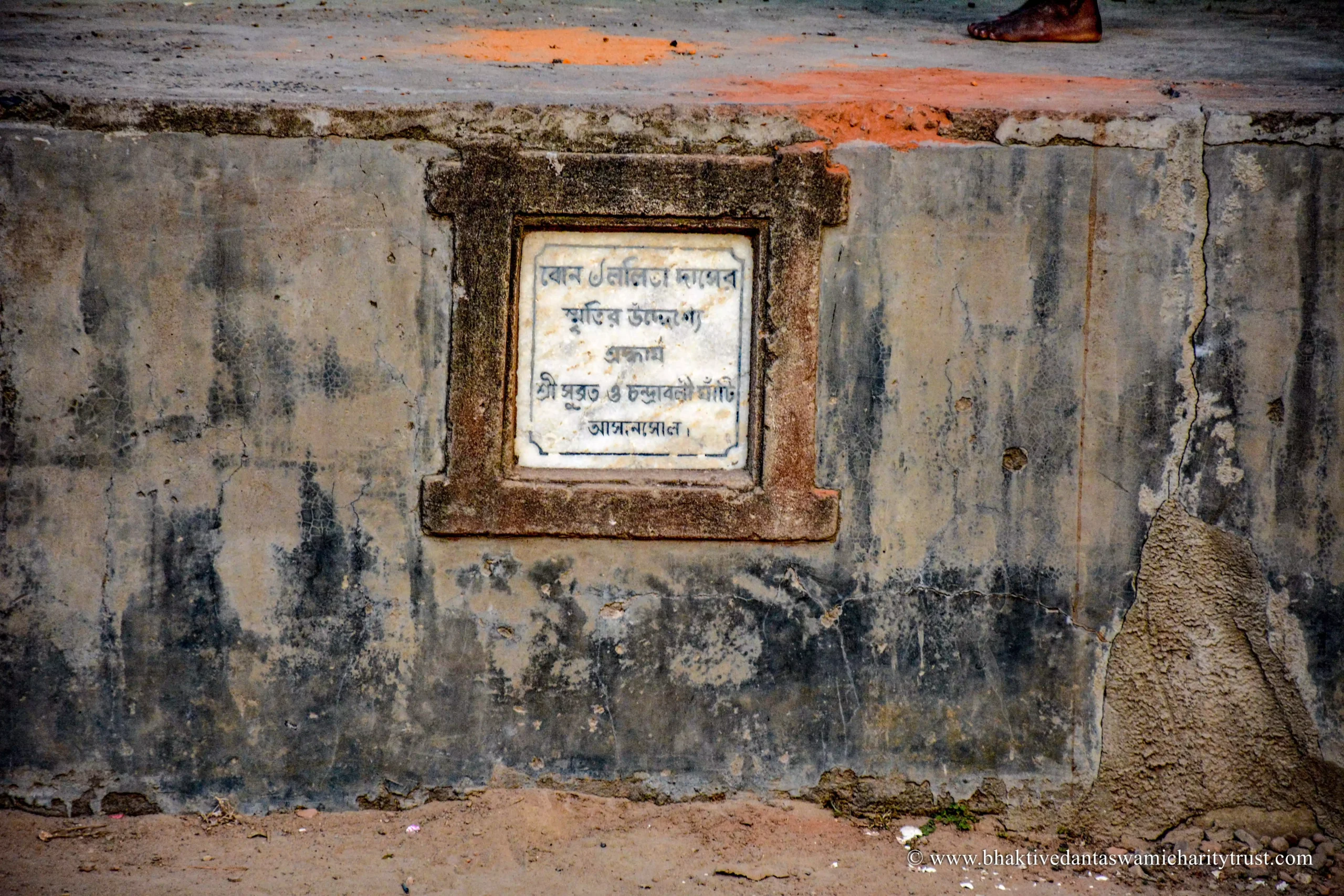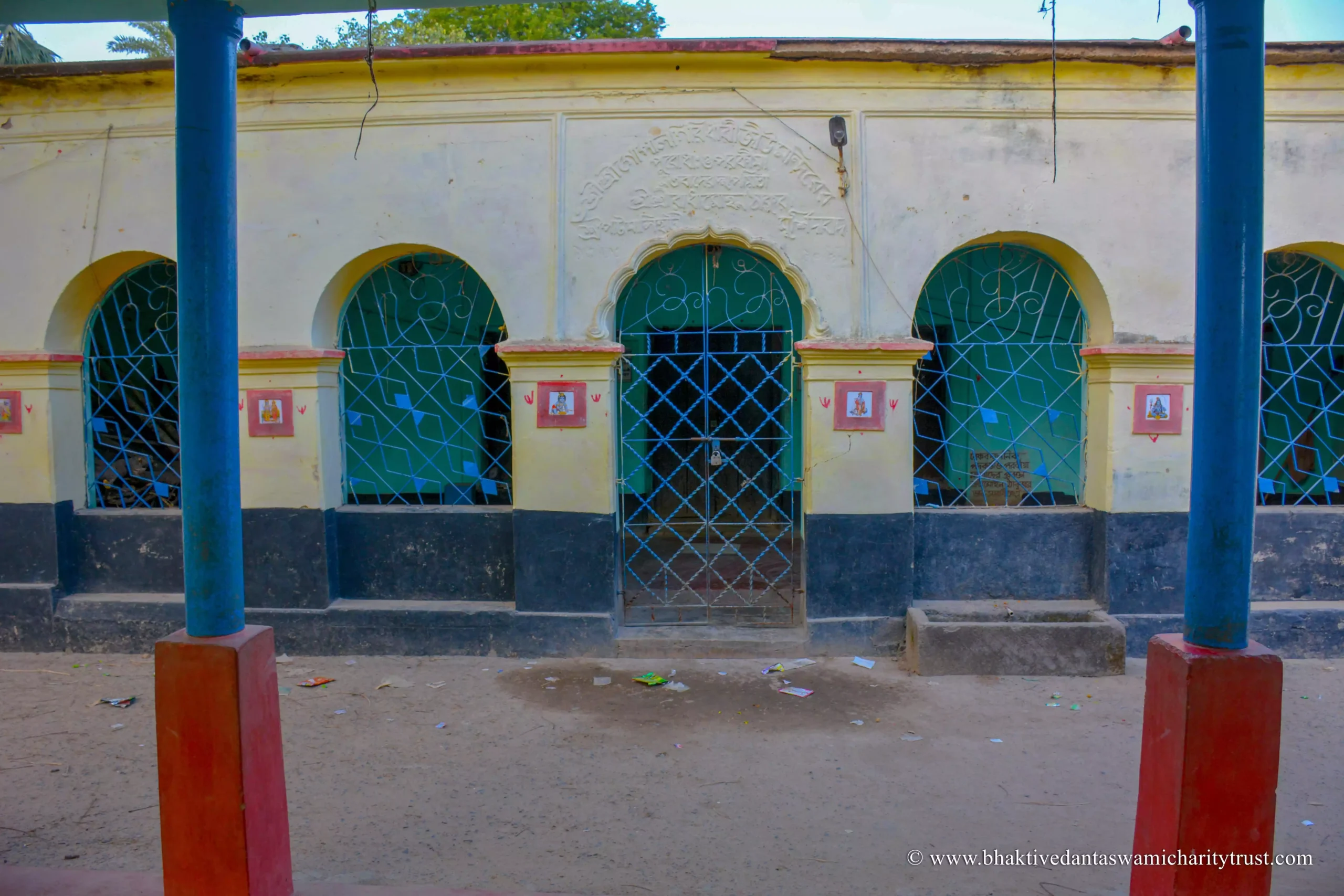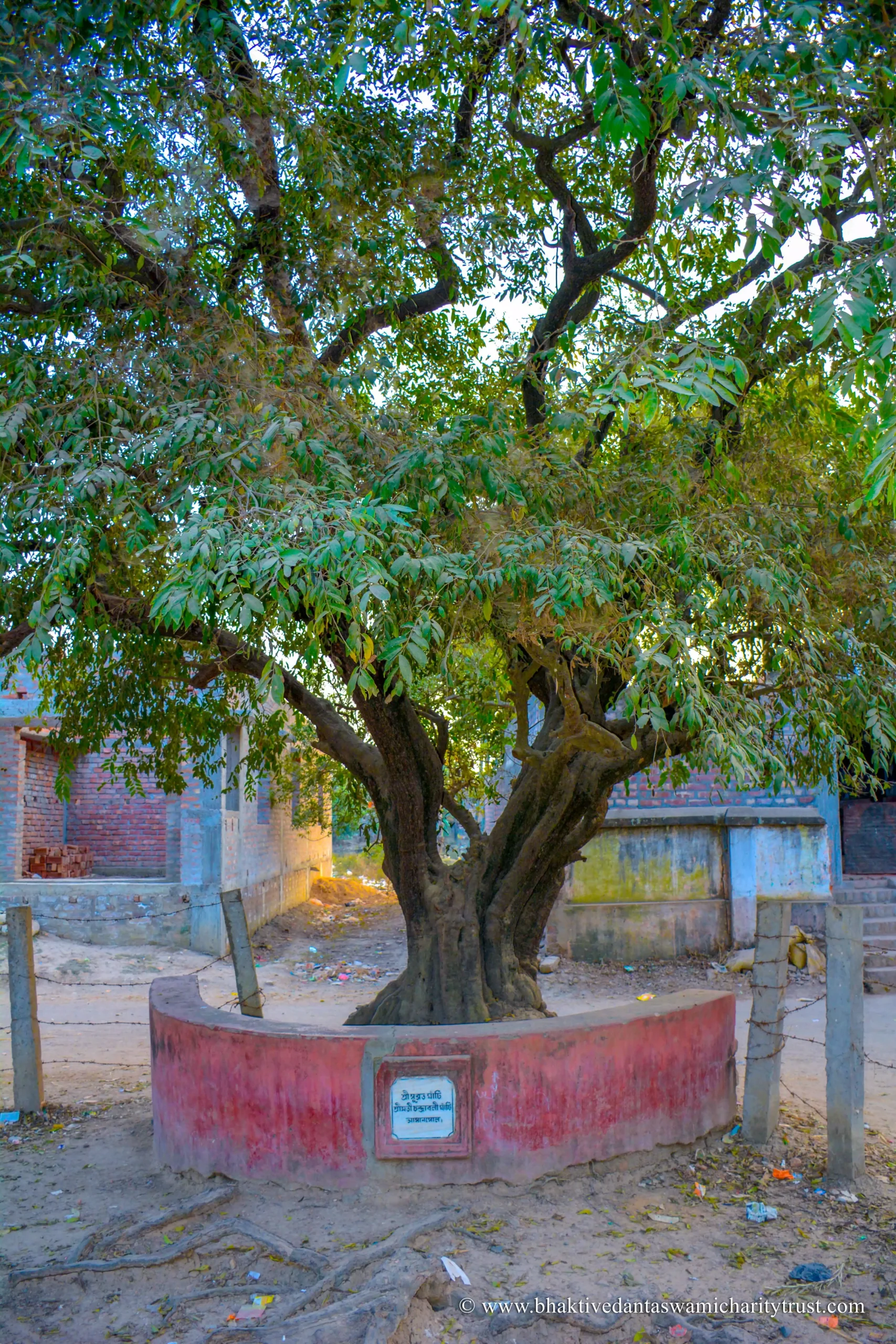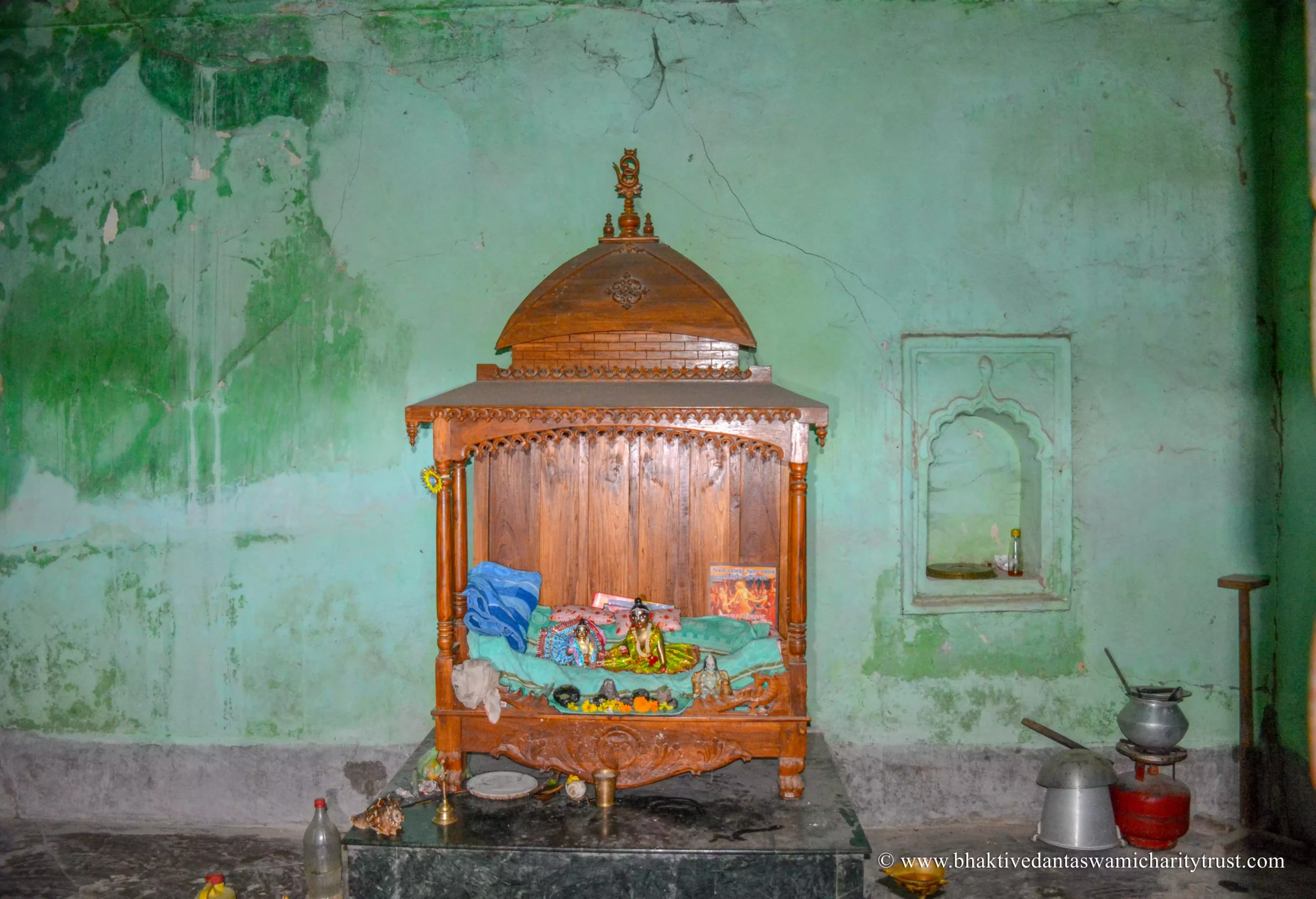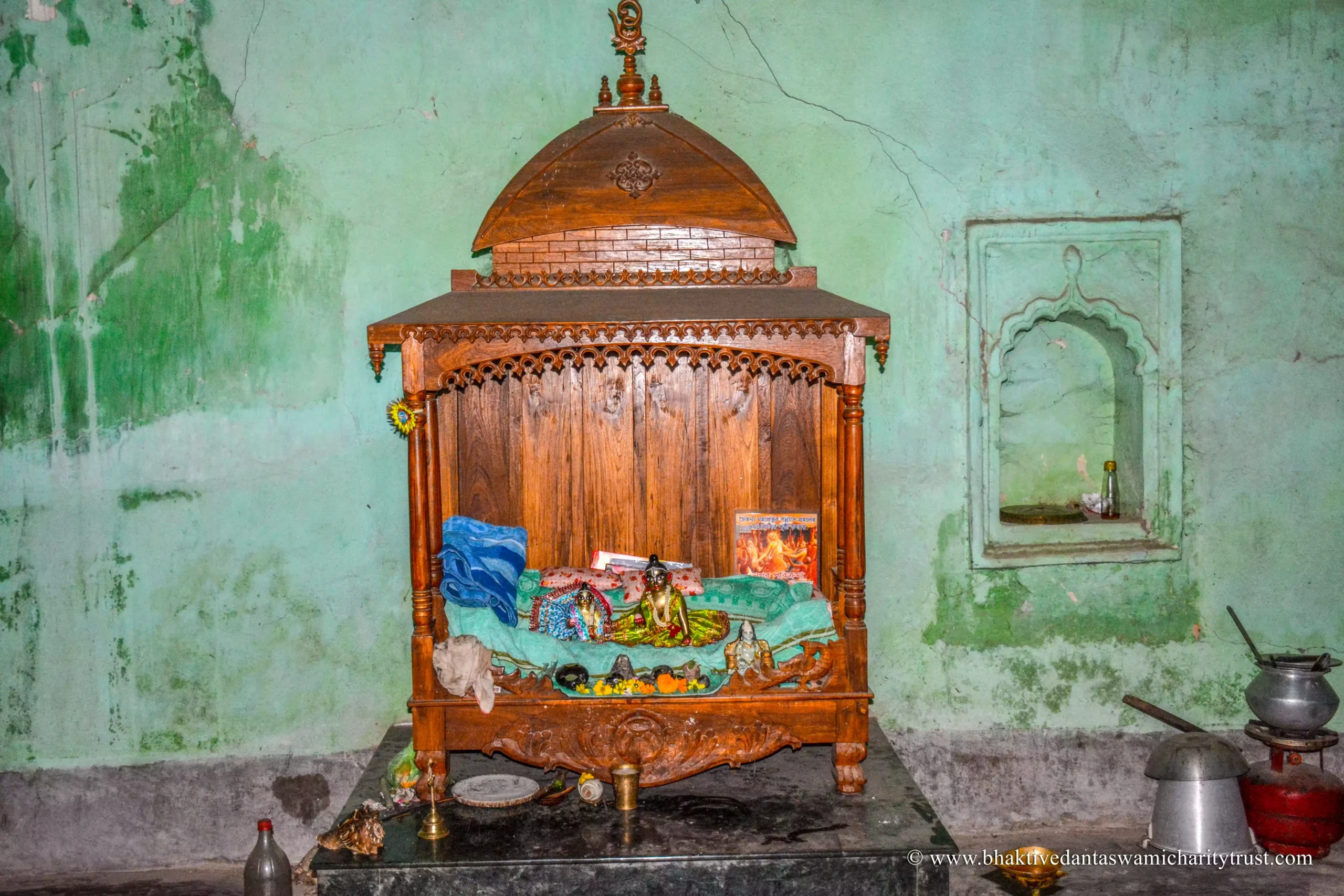Mālihāṭi
Description
Śrīpāṭa of Śrī Rādhāmohana Ṭhākura, fifth subordinate of Śrīnivāsa Ācārya Prabhu and of the poet Yadunandana Dāsa
Mālihāṭi is situated in the district of Murshidābād. Mālihāṭi is located after three stations from Kāṭwā in the railway track of Kāṭwā-Ājimgañj. From the station one can reach the Śrīpāṭa by walking for twenty minutes through red coloured muddy-road. In this road there is no arrangement of any other transport.
This place is the Śrīpāṭa of Śrī Rādhāmohana Ṭhākura who is the fifth subordinate of Śrīnivāsa Ācārya and of the poet Yadunandana Dāsa. Śrīnivāsa Ācārya had three sons named Gatigovinda, Kṛṣṇaprasāda and Jagadānanda. Jagadānanda’s wife passed away during her stay in the in-law’s house at Dakṣiṇagañj. By the order he had in a dream from Ācārya Prabhu, he came to Mālihāṭi and got married for the second time. Amongst his five sons the first son is Śrī Rādhāmohana Ṭhākura. The incomplete activities of Śrīnivāsa Ācārya Prabhu were completed by Śrī Rādhāmohana Ṭhākura. The śākta (worshiper of Goddess Śakti ) king of Kuṭiyā became his disciple by hearing his erudition and glory. He composed one lyrical book named ‘Padāmṛta-samudra’ containing 301 verses. He composed 182 verses in ‘Padakalpataru’.
In the royal assembly of Nawab Mirjāfara Khāṅ, the topic of svakīyā-rasa and parakīyā-rasa was discussed and Śrī Rādhāmohana Ṭhākura defeated the world-wide famous learned man and established that the parakīyā- rasa is the topmost out of all other rasas exhibited by Kṛṣṇa. To test Śrī Rādhāmohana Ṭhākura, the Nawab ordered his servants to bring some cooked rice mixed with meat which can make one outcaste. The plate was covered with a piece of cloth and when it was removed all saw that the plate was full with the fragrant flowers like mallikā, mālati and other flowers. Then the Nawab was amazed and requested Rādhāmohana Ṭhākura to accept some donation. He did not accept anything. But, instead he told, ‘The Vaiṣṇavas of Bengal, Bihar and Orissa will not be under anybody’s control, and they will be under our authority. You can only donate the Bhāvaka Mahala, the income from which will be used in the service of the Vaiṣṇavas.’ The Nawab donated that Mahala happily.
The king Nandakumara Roy was the disciple of Śrī Rādhāmohana Prabhu. He gave one thousand bighā of land in charity to his gurudeva. Gurudeva went to a house of a poor disciple to attend his mother’s śrāddha ceremony but he did not get proper reception due to his late arrival there. He disaapeared from there and reached Mālihāṭi with Kālindī Dāsa and Parāna Dāsa. The king Nandakumara was hanged to death due to his gurudeva not being pleased with him. This was a historical event.
After taking bath he decorated himself with tilaka/garland and disappeared from this world in a tulasī garden accompanied with Harināma Saṅkīrtana on the ninth day of the waxing moon in the month of Caitra (March-April). It is said that both his dear disciples Kālindī Dāsa and Parāna Dāsa were returning to Mālihāṭi at that time from Vṛndāvana after repairing the worn-out grove of Śrī Īśvarījī. On the way, gurudeva gave them darśana. He told them to perform a big festival on the fourth day of the waning moon of Vaiśākha month (April-May) and then gurudeva disappeared. Śrī Rādhāmohana Prabhu did not have any children. After seven days of his disappearance, his wife Śrīmatī Rāṇī Gosvāmī, also left this world.
The worship of Gopāla is present in this Śrīpāṭa. There is a Nāṭamandira in the front. The place with a big altar surrounded by ancient tamāla and kṛṣṇacūḍā trees is very pleasing to the mind. This temple was renovated on 10th. Bhādra (August) in the Bengali year 1393. Till today, a very big festival is celebrated on the day of Rāma-navamī at Mālihāṭi on the occasion of Śrī Rādhāmohana Prabhu's disappearance.


